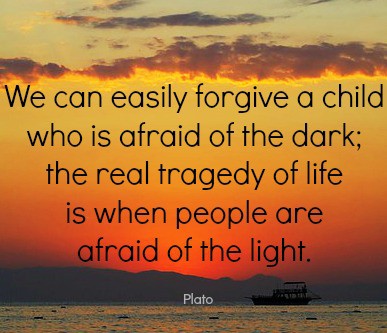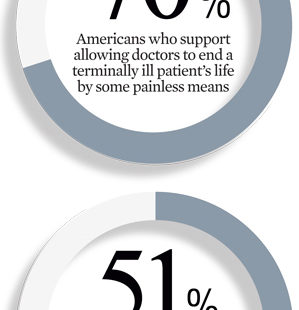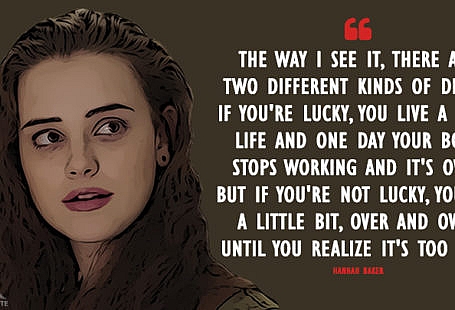Everyone experiences death differently, but there are common aspects of the dying process. This guide for people dying offers a glimpse into what it may be like to die. I’m also including recent research information about what a “good death” is – and how to get it!
The True Work of Dying: A Practical and Compassionate Guide to Easing the Dying Process by Jan Selliken Bernard and Miriam Schneider is a holistic guide for people dying. I know it’s difficult, sad, and scary to read about the dying process, but if you learn what a good death is, you might find it easier to go gently into the good night.
“Fear of dying is something almost every patient with advanced cancer or other life-threatening illness faces,” says Dr. Sarah Hales, Coordinator of Psychiatry Services, Psychosocial Oncology & Palliative Care, Princess Margaret Cancer Centre. “Helping them achieve a good death is an important goal of palliative care.” She adds that the medical system has traditionally focused on disease and the physical symptoms of the dying process, but only recently have they started exploring approaches to relieve the fear of death in people dying. This is what palliative care is about – it helps both people dying and their families address emotional, spiritual and existential concerns.
The Dying Process – A Guide for People Dying
You’ll be interested to learn that some people who are dying can control the dying process. It depends on your illness, type of death, and even your personality. Here are the most common aspects of the dying process…
Withdrawal from friends and family. People dying often focus inward during the last months of life. You may lose interest in your favorite TV shows, family, and even your pets. If you feel like talking, you might want to reminisce about the good and bad parts of your life. You might want to tie up loose ends, both emotionally and practically. Part of the dying process for some dying people is a discussion about important documents or mementos.
Sleepiness. You may sleep a lot more, or sleep for a few hours at a time, day and night. Like a baby at the beginning of his or her life! You may feel drowsy and confused when you first wake up. Just like the living process, the dying process may involve worries or concerns that keep you up. It might help to write about your fears and anxieties – and it definitely helps to give them to God. Don’t hold on to your pain, even if you’re scared to die.
Weakness and fatigue. The dying process involves increasing weakness and exhaustion, because your body is winding down. You’ll have good days with higher energy levels, and bad days when you sleep all the time. You’ll need help with your personal care. Save your energy for things that are important to you. Most people dying have similar things that are important to them: relationships, peace, and spirituality.
Less appetite. If you were a “foodie” before, the dying process will steal your appetite! Your body doesn’t need burgers and fries anymore. Dying people find chewing difficult because it takes energy. They often prefer milkshakes, ice cream, or pudding. It’s the cycle of life: you’ll nap a lot, and wake up for a bit of food. Ice chips are a good way for dying people to stay hydrated.
Confusion. You may feel confused, and you may see people who have already died. This can be a comforting aspect of the dying process. Some people dying report seeing or speaking with loved ones who have died. You might talk about about going on a trip, seeing lights, butterflies or other symbols of a reality that others can’t see. Hopefully, your caregivers will encourage you to share your visions and dreams with them, and not try to talk you out of seeing what you see. This is part of death with dignity.
Number one and two issues. Dying people often pee less because they’re drinking less. Your pee might be dark and smell strong, again because you’re not drinking. This is a normal part of the dying process. There are some alternative therapies for hospice patients that can help you and your caregivers cope with this part of the dying process.
Breathing patterns. Your breathing might become slower or faster, and come and go in cycles. You may not notice this part of the dying process, but your caregivers will.
Cool feelings. Your blood flow will slow down, since your body is shutting down. Some of your body parts may discolor and feel cool. This part of the dying process is not painful or uncomfortable for people dying. A light blanket may be all you need, because you may not feel cold.
If you have any thoughts on the dying process, please share below.
What is a “Good Death”? A Research Study

“The Dying Process – A Guide for People Dying” image by Laurie
As I was researching how dying people experience the process of dying, I found research about the overall quality of death of cancer patients who die in urban Canadian settings. These patients had access to palliative care, and it was found to be good to excellent in the large majority of cases. This is comforting, as it shows that the dying process doesn’t have to include pain or suffering.
The research on a “good death” is called “The Quality of Dying and Death in Cancer and Its Relationship to Palliative Care and Place of Death.” It’s published online in Journal of Pain and Symptom Management, with Dr. Sarah Hales, Lecturer, Department of Psychiatry, University of Toronto as lead author.
A good death includes many dimensions. The dying process needs to encompass symptom and pain management, life closure, and facing the end of life without overwhelming fear or anxiety. People dying may have different perspectives on the dying process than their family and caregivers – and it’s extremely important to prioritize how the dying person feels.
If you’re dying, be honest about what you need. A good death involves being authentic and honest about what you want, even if you think your dying wishes may hurt your loved ones. Maybe you want the black sheep of the family to come visit you, or you have to swallow your pride and apologize to someone you hurt. A good death is about embracing the dying process – and the dying process for many people is about making amends and saying good-bye in peace.
In this study, dying people were interviewed about the quality of death and dying using the Quality of Dying and Death questionnaire, the most widely used and best validated tool to assess the dying process and experience.
The Quality of Dying and Death questionnaire includes 31 items, including:
- Symptoms and personal care
- Treatment preferences
- Time with family
- Whole person concerns
- Preparation for death
- The moment of death
The four key domains of the dying process are Symptom Control, Preparation (i.e. visiting with spiritual advisor, avoiding life support, having funeral arrangements in order), Connectedness (i.e. spending time with family and friends), Transcendence (i.e. feeling unafraid of dying, feeling at peace with dying, feeling untroubled about strain on loved one).
Home deaths are more likely to be “good deaths.” About one-third of all the cancer deaths occurred at home,while 40% occurred in an inpatient hospice/palliative care unit and 28% in an acute care hospital. If you don’t want to die in hospice or a hospital, read about end of life care at home. Home deaths were linked to better overall scores on the death experience. Surprisingly, home death with briefer palliative care was linked to better preparation and overall quality of the dying process than home death with longer palliative care involvement (i.e. greater than seven days).
Living at the End of Life: A Hospice Nurse Addresses the Most Common Questions by Karen Whitley Bell RN is an excellent resource for people dying and their caregivers. It’ll help ease the dying process by shedding light on what a “good death” is all about.
However, good deaths do occur in palliative care settings or hospices. There was no significant difference between deathin a hospice or palliative care setting and an acute care hospital. “You can have a good death in a hospice or a hospital setting when there is high quality palliative care,” says Dr. Hales. “Caregivers often feel incredibly guilty about their loved ones dying in hospital, but it may not always be possible to die at home. Complicated symptoms, lack of advanced care planning and caregivers who feel overwhelmed with the process could indicate that a hospice or hospital death might be better for the patient and the family.”
Although the dying process and death experience ratings were generally positive, for a substantial minority, symptom control and death-related distress at the end of life were problematic. Fifteen per cent (15%) of the sample scored in the “terrible” to “poor” range for symptom control, with 19 percent scoring in the same range for Transcendence – feeling unafraid of or making peace with dying. These could be areas in which further interventions are needed to improve outcomes, say the authors.
A huge part of the dying process – and a “good death” is about managing anxiety, fear, and distress at the thought of dying. How do you feel about dying? I welcome your thoughts below.
Source of the dying process information for dying people from caringinfo.org – originally it was published as a guide to the dying process for caregivers. Rewritten for this blog, to be a guide for people dying. Source of the research info on cancer patients and a good death: How Can Modern Medicine Help Dying People Achieve a “Good” Death? via uhn.ca.






